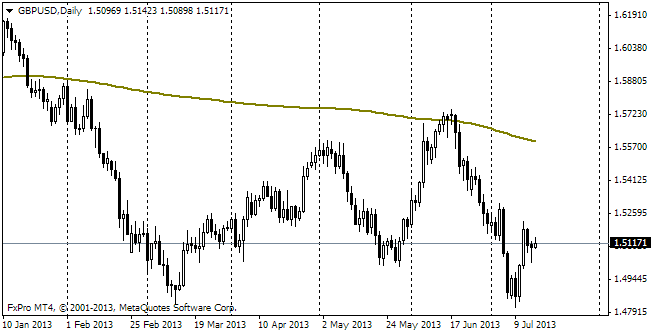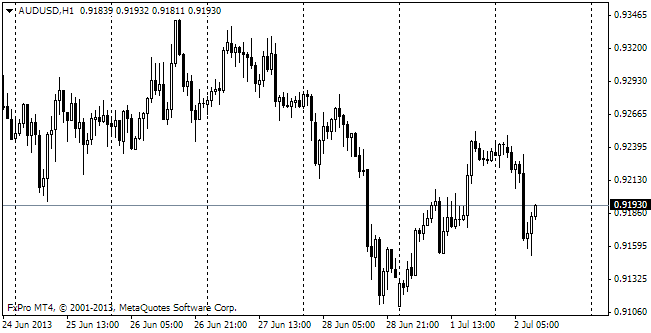EUR/usd
More often it's quite the opposite, but yesterday analysts gained the upper hand over traders. A couple of minutes before the release of the EU inflation statistics, the pair came under severe pressure. It tumbled down by 15 pips to 1.3745. Then it was reported about sharper inflation slowdown than expected and the euro/dollar dropped already to 1.3720. However, the impulsive reaction of traders (or were these robo traders, working on news?) to the weaker-than-expected data held just for a moment. Further the single currency got some support on the analysts' comments that the slowdown from 0.7% y/y to 0.5% y/y against the supposed 0.6% didn't necessarily mean a higher probability of policy easing this Thursday. We often spoke about this in our reviews. Decline in inflation is a necessary condition for the ECB, but it is not enough. Decline in consumer and/or business activity is also indispensible. And here everything looks more or less fine. Germany's retail sales, published three hours before the inflation data, proved to be surprisingly good. In February the sales grew by 1.3% after the growth by 1.7% a month ago. Thus, the annual growth reached 2%. A bit later France confirmed the GDP growth in the last quarter of 2013 at 0.3% and the Netherlands raised their growth estimate from 0.7% q/q to 0.9%, which ensured confidence in the strength of growth in the core countries. Yet, the periphery failed to impress with similar data, but weight sometimes matters. Spain unexpectedly showed a large trade deficit (-3.6bln against the expected surplus of 2.5bln). The package of Portuguese statistics also showed worsening of the major parameters: retail sales (-1.2%), industrial production (-0.6%), current account balance (-185bln). The weak are the first to be broken down, this is why the core countries haven't shown any deterioration in performance yet, while the periphery already suffers the high rate of the single currency. In our opinion, the ECB should increase its readiness to ease the policy and state it out loud, though there's still no urgency in it this Thursday.
GBP/USD
Even though the beginning of the day was not very successful, the pound eventually had managed to appreciate against the US dollar by its end. Yet, it was possible not due to the strength of the former like in the previous week, but due to the weakness of the latter. Speaking about the way in which the Fed maintains employment growth, Janet yellen made quite dovish remarks, saying that despite the continuous progress the labour market still needs support as Americans still regard the current state of affairs as crisis, besides some economic indicators remain at the crisis levels. As a result of such claims the pound/dollar rose to 1.6680, it means to the highs for two weeks and a half. Yet, 1.6700 is still intact.

USD/JPY
The yen continued to fall yesterday and against the dollar it reached a three-week low. usdjpy rose to 103.40 and the further correction below 103 proved to be short-term. Now it seems that the yen-sellers have returned to the market. The Japanese corporations, which were repatriating profits in the first quarter (in Japan it was the end of the financial year), have again begun to invest them. The Tankan index grew to the new multiyear high, but failed to meet the expectations. Its rate made 17 against 16 in the previous quarter and the expected 19. The forecast for the coming quarter proved to be pessimistic – the first decline in more than a year. It is remarkable that producers are building the dollar/yen rate of 99.50 into their forecasts, apparently not believing in the steadiness of the current decline.

AUD/USD
The RBA, as expected, kept the major interest rate unchanged. The attention is focused on the fact that despite strengthening of consumer activity, the reduction of investment in the extractive industries makes the business activity growth in the recent months fragile. The aussie reached 0.9300 at the time of the release, but soon fell to 0.9260.
